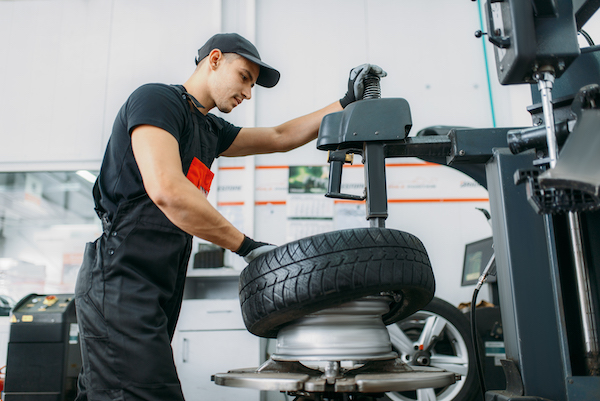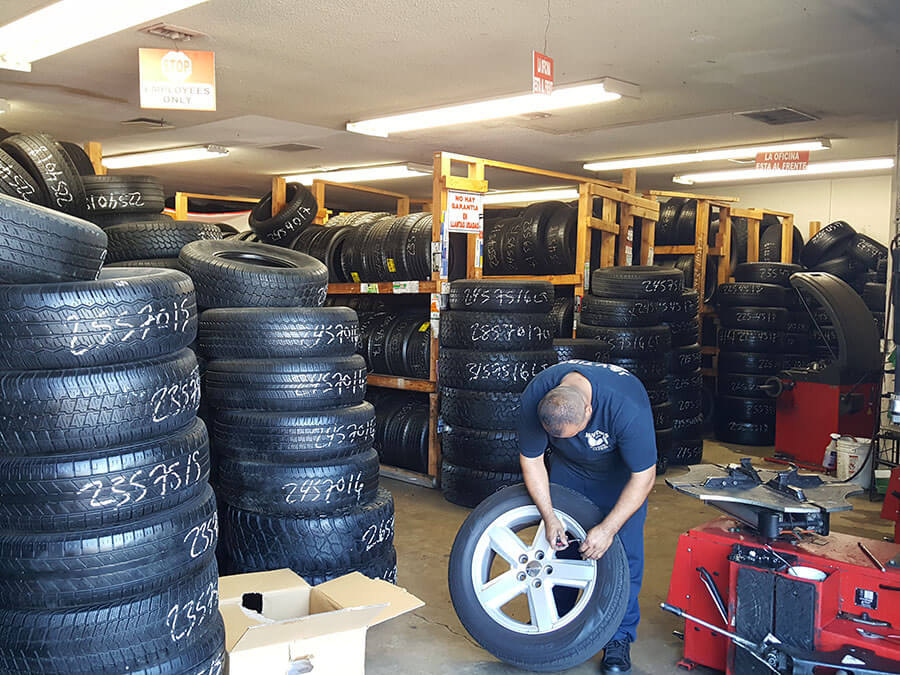Tire Solution: Understanding Tire Stress Monitoring Systems
Comprehending Tire Pressure Surveillance Systems (TPMS) is a crucial aspect of maintaining ideal vehicle efficiency and security when driving. With developments in vehicle modern technology, TPMS has become a conventional attribute in modern-day automobiles, supplying real-time info on tire pressure levels. Digging deeper into the details of TPMS, one can uncover the various components that compose this system and the importance of each in guaranteeing precise monitoring. From straight to indirect TPMS systems, the landscape of tire pressure monitoring varies, each with its special set of advantages and factors to consider. Stay tuned to untangle the complexities of TPMS, from maintenance tips to the obvious advantages of maintaining your tires effectively blew up. tire shop morris.

Value of TPMS
The importance of Tire Pressure Tracking Solutions (TPMS) exists in their ability to boost lorry safety and performance with real-time surveillance of tire stress degrees. Maintaining the appropriate tire stress is crucial for making certain ideal handling, braking, and overall security of a lorry. TPMS gives drivers with immediate feedback on any type of underinflated or overinflated tires, enabling for timely adjustments to be made.
Elements of TPMS
Making up various essential elements, a Tire Stress Monitoring System (TPMS) operates as a sophisticated safety attribute in contemporary lorries. The primary parts of a TPMS include sensing units, a control module, and a caution indicator. Sensing units are normally located in the tire shutoff stem or connected to the wheel assembly, where they gauge tire pressure and transmit information to the control component. If it identifies considerably reduced stress in any of the tires, the control module processes this info and causes a warning. The warning sign, frequently a sign on the control panel, notifies the motorist to examine the affected tire or tires. Some advanced TPMS designs additionally present the actual tire pressure readings for each and every tire, supplying drivers with real-time info to make certain ideal tire efficiency and safety. By keeping track of tire pressure continuously, TPMS assists protect against crashes, lowers tire wear, and boosts gas efficiency, making it a vital element for automobile security and performance.
Kinds Of TPMS

On the various other hand, indirect TPMS relies upon the lorry's wheel rate sensors to keep track of tire stress. This system identifies underinflation by comparing the rotational rates of the wheels. Indirect TPMS is much less pricey than direct TPMS, as it utilizes existing sensing units within the automobile.
While direct TPMS offers a lot more precise analyses, indirect TPMS is easier in layout and commonly requires less upkeep. Both systems have their advantages and restrictions, and the choice in between them typically depends upon variables such as expense, lorry make, and personal preference. Recognizing the differences in between these 2 sorts of TPMS can assist automobile owners make educated decisions relating to tire maintenance and safety and security.
TPMS Maintenance Tips
Reliable maintenance of TPMS is essential for ensuring ideal performance and safety of your car. On a regular basis evaluating the TPMS sensing units for any type of damage or rust is crucial. Guarantee that the sensing units are tidy and free from debris that might disrupt their functioning. Additionally, it is suggested to inspect the sensor batteries periodically and replace them as required to guarantee exact readings. Conduct routine checks on the tire pressure levels and contrast them with the TPMS readings to ensure they correspond. look at more info If there are any discrepancies, alter the system following the maker's guidelines. During tire turning or substitute, make sure that the TPMS elements are taken care of very carefully to prevent any kind of prospective damages. If the TPMS advising light illuminates on the control panel, address the problem quickly by checking the tire stress and the general system for any mistakes. By sticking to these upkeep tips, you can lengthen the lifespan of your TPMS and boost the safety and security of your driving experience.
Benefits of Proper Tire Stress
Maintaining correct tire pressure, as stressed in TPMS Maintenance Tips, is important for enjoying the countless advantages connected with optimum tire stress degrees. One of the key benefits of preserving the appropriate tire stress is boosted gas effectiveness. When tires are appropriately pumped up, there is less rolling resistance, leading to much better gas economy. In addition, appropriate tire stress ensures also tire wear, prolonging the lifespan of the tires and advertising much safer driving conditions. With the best tire stress, vehicles additionally have better handling and traction, specifically in adverse weather. This can boost total driving performance and safety for the driver and travelers. Additionally, preserving optimum tire stress can add to a smoother and much more comfortable trip by reducing vibrations and noise brought on by underinflated tires. Finally, the advantages of correct tire stress surpass simply tire visit longevity; they include enhanced fuel performance, enhanced safety, much better lorry efficiency, and total driving convenience.
Verdict
Finally, comprehending tire stress surveillance systems (TPMS) is crucial for keeping ideal tire stress and making sure vehicle security. By identifying the relevance of TPMS, knowing with its parts, knowing the different kinds available, adhering to appropriate upkeep ideas, and understanding the benefits of preserving proper tire stress, chauffeurs can improve their driving experience and extend the life expectancy of their tires. Appropriate tire stress is vital to efficient and risk-free lorry operation.

Comments on “Trust Fund Morris Tire and Alignment for Professional Service and Treatment”